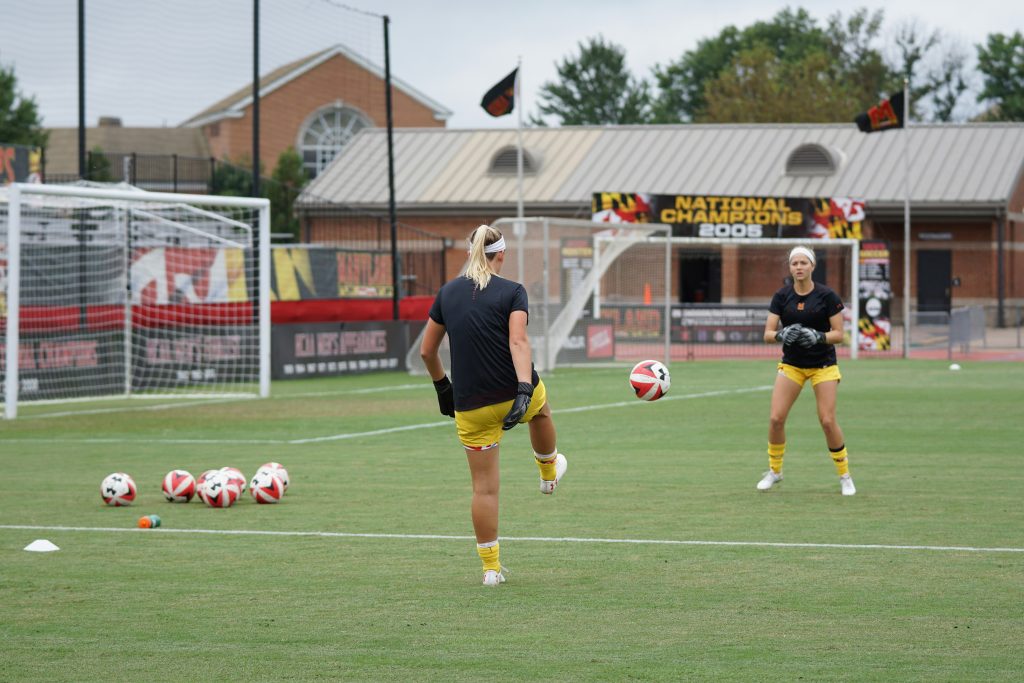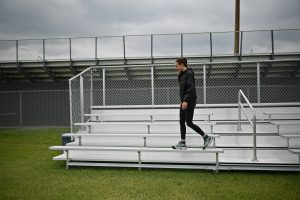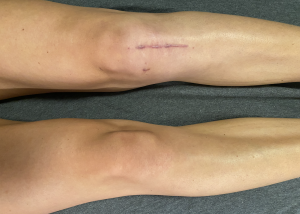Rates of Returning to Sport after ACLR
One of the first questions patients ask when recovering from an ACLR is “When can I play again?”
This is a very fair question, since most patients injured themselves playing the sport they love, were suddenly completely removed from their favorite activity, their identity and social outings, and are stuck doing repetitive rehab exercises.
84-91% of athletes say they expect to return to sport after their ACL injury (1), unfortunately, the actual number is much lower.

I’ve been there myself having torn my left ACL late summer of 2021 and getting surgery at the end of that year. It took me 10 months to feel ‘normal’ running 5km, it took 13 months to return to social indoor soccer, 16 months to return to social outdoor soccer and 2.5 years to return to competitive women’s Division 1 outdoor soccer, and I’m at the beginning of the season so I’m still working on that ‘return to performance’.

In the recovery process, most patients are told they will be back playing at 12 months, sometimes even before.
The research discusses the importance of not returning to pivoting, competitive sports before 9 months, anytime before that exponentially increases the risk of re-injury (2). However, the amount of post-op patients who actually return in the 9-12 month range is lower than we would think.
It differs in terms of elite athletes, recereational athletes, females and males, and the level of sport each group is returning to. I’ll summarize some of the findings from the research:
- The rate of returning to a general level of sport was 81% (3)
- Between 59% – 65% of recreational athletes returned to their pre-injury level of sport (3,4)
- Only 55% returned to competitive sport (3)
- Males were 1.5x more likely to return to pre-injury and competitive sport than females (3)
– Up to 10% higher RTS than females (1) - Elite athletes tend to return to competitive sport at a higher rate – around 83% (5)
– Elite athletes are ~6x more likely to return to competitive sport than non-elite athletes (3) - Younger athletes (<19 years of age) tend to have higher return to sport rates at almost 30% more than older athletes (1)
The return to sport times varied in these studies.
Now these numbers change a bit for athletes who follow criteron-based rehab programs:
- 84% returned to pre-injury level after 2 years – this was the same for females and males (6, 7)
– Another study showed 87% of females returning after a criterion-based rehab program compared to 100% of male participants (6)

How long does it take to get back to pre-injury level?
- For non-elite younger athletes, it has taken up to 2 years to state they felt they were back at their pre-injury level (1)
- The risk of re-injury is highest within the first 2 years of return to sport (1)
- Actual average time of return to play is closer to 17 months (6)
There are numerous factors that contribute to why people may not return to their sport at the same capacity as pre-injury:
- not reaching ‘normal’ knee function
- age
- social roles
- psycholgical factors – fear of reinjury, lack of motivation, lack of confidence in the knee
(these factors impact between 65-77% of athletes who don’t return to sport!) (8)
Our job as physiotherapists (and other rehab professionals) is to equip patients with the physical and psychological ability to return to sport in the capacity they would like to.
Personally, I think this entails minimum a one-year criterion-based rehab program, gradual exposure to the sport at hand, regular follow ups during the return to sport phase, and then continued rehab throughout the return to participation/play/performance phases (read more about those phases here). This means that a criteron-based rehab plan will likely actually last for nearly 2 years. After that, I still recommend athletes to receive programming and check ins.
If you’re at the beginning of your ACLR journey, I’d recommend starting with the ACL Injuries ebook.
If you’re in the middle or think you are at the end but you don’t feel ready, book a 1:1 with me and we can make a plan for you!
References:
- Webster KE, Feller JA. A research update on the state of play for return to sport after anterior cruciate ligament reconstruction. Journal of Orthopaedics and Traumatology. 2019 Dec;20(1):1-7.
- Grindem H, Snyder-Mackler L, Moksnes H, Engebretsen L, Risberg MA. Simple decision rules can reduce reinjury risk by 84% after ACL reconstruction: the Delaware-Oslo ACL cohort study. British journal of sports medicine. 2016 Jul 1;50(13):804-8.
- Ardern CL, Taylor NF, Feller JA, Webster KE. Fifty-five per cent return to competitive sport following anterior cruciate ligament reconstruction surgery: an updated systematic review and meta-analysis including aspects of physical functioning and contextual factors. British journal of sports medicine. 2014 Nov 1;48(21):1543-52.
- Brzeszczyński F, Turnbull K, McLelland C, MacDonald D, Lawson G, Hamilton D. Functional outcomes and return to sport following anterior cruciate ligament reconstruction in recreational athletes: A systematic review. The Knee. 2022 Jun 1;36:103-13.
- Lai CC, Ardern CL, Feller JA, Webster KE. Eighty-three per cent of elite athletes return to preinjury sport after anterior cruciate ligament reconstruction: a systematic review with meta-analysis of return to sport rates, graft rupture rates and performance outcomes. British journal of sports medicine. 2018 Jan 1;52(2):128-38.
- Drole K, Paravlic AH. Interventions for increasing return to sport rates after an anterior cruciate ligament reconstruction surgery: a systematic review. Frontiers in psychology. 2022 Aug 22;13:939209.
- Joreitz R, Lynch A, Popchak A, Irrgang J. CRITERION-BASED REHABILITATION PROGRAM WITH RETURN TO SPORT TESTING FOLLOWING ACL RECONSTRUCTION: A CASE SERIES. Int J Sports Phys Ther. 2020 Dec;15(6):1151-1173. doi: 10.26603/ijspt20201151. PMID: 33344032; PMCID: PMC7727433.
- Nwachukwu BU, Adjei J, Rauck RC, et al. How Much Do Psychological Factors Affect Lack of Return to Play After Anterior Cruciate Ligament Reconstruction? A Systematic Review. Orthopaedic Journal of Sports Medicine. 2019;7(5). doi:10.1177/2325967119845313


